The Benefits and Risks of Popular Ayurvedic Herbs and Spices

Key Takeways
Did you know that some of the most popular herbs and spices used in Ayurveda offer a wealth of health benefits? They can help keep you healthy and have a range of potential benefits, from improving digestion to reducing inflammation.
Ayurveda uses these herbs and spices to support optimal health by helping to balance the doshas, support detoxification, and provide other unique benefits. And, with or without Ayurveda, you can use these herbs and spices in your everyday cooking for their health benefits while also enjoying the flavorful taste they add to your food.
Read on to learn more about the health benefits of some of the most commonly used Ayurvedic herbs and spices.
But First, What Is Ayurveda?

Last week, we told you all about Ayurveda, an ancient Indian holistic healing system that dates back over 5,000 years. As a refresher: Ayurveda comes from two Sanskrit words, “Ayur,” which means life, and “Veda,” which translates to knowledge or science. So it pretty literally translates to “knowledge of life” or “the science of life.”
The 5,000-year-old system of holistic medicine originated in India and is based on the idea that your physical state of health (constitution or Prakriti—prime material energy) determines health. Prakriti is governed by the balance of three principles, or doshas: Vata, Pitta, and Kapha.
According to Ayurveda, health is a state of balance within the individual, and illness results from imbalance. Practitioners design Ayurveda therapies to restore balance and improve overall health. Although Ayurveda has been around for centuries, it’s becoming increasingly popular worldwide off late as more people seek alternatives to conventional medicine.
Ayurvedic Herbs and Spices
Since Ayurveda is based on the belief that health and wellness depend on a balance of the three doshas mentioned above—Vata, Pitta, and Kapha—Ayurvedic treatments focus on restoring balance within the body and mind to promote optimal health and overall wellbeing.
And one of the key aspects of Ayurveda is using herbs and spices to maintain balance in the body. Ayurvedic practitioners usually advise Ayurvedic products and treatments depending on your doshas.
A note of caution here: before trying any herbal medicine, or substituting traditional medicine with herbal remedies, speak with a healthcare professional to find out what works best for your body. Also, consult your doctor before making any changes to your diet or lifestyle.
To help you stay informed, here are some of the most popular herbs and spices used in Ayurveda and their potential health benefits:
Ashwagandha
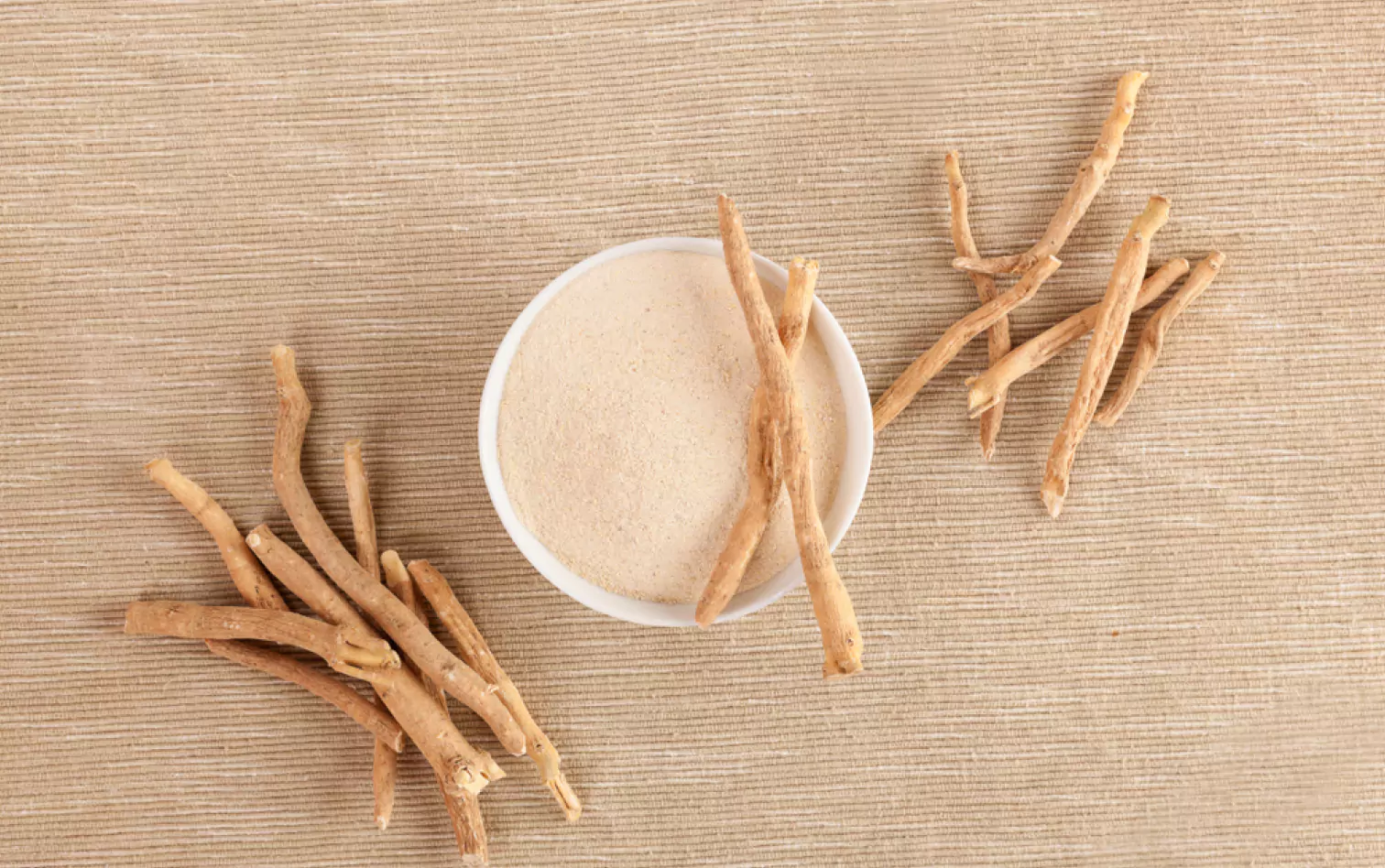
Ashwagandha is an herb that has been used in Ayurvedic medicine for centuries. Here’s a fun fact: in Sanskrit, ‘ashva’ means horse, and ‘gandha’ means smell—the herb is named for its strange, horsey smell! It’s also popularly called an Indian winter cherry. It is considered a “Rasayana” herb, meaning it may have therapeutic, restorative, rejuvenating properties.
According to Ayurvedic practice, Ashwagandha offers a wide range of health benefits, including improved hypothyroid function, reduced stress levels, and enhanced immune system function.
Some risks associated with Ashwagandha:
Ashwagandha can cause hyperthyroid patients to have worsening symptoms. It could also be harmful to those with hyperthyroid conditions.
Ginseng
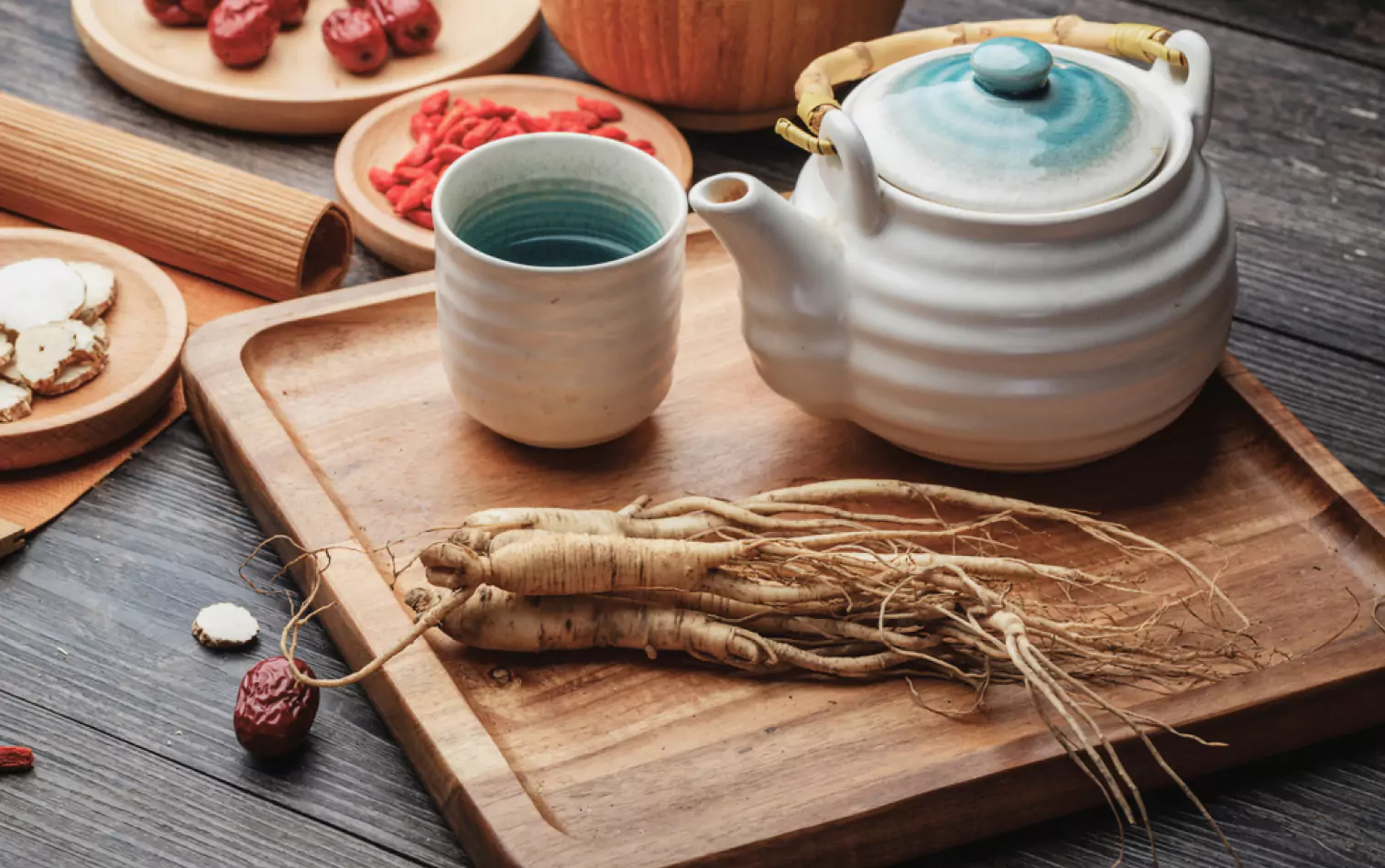
Ginseng has been used for centuries in traditional Chinese medicine. Recently, scientists in the West have begun to study the plant and its potential therapeutic properties.
So far, research suggests that Ginseng has several health benefits, including improved cognitive function, enhanced immune system function, and reduced stress levels. Additionally, Ginseng may help regulate blood sugar, type 2 diabetes, and cholesterol levels.
Ginseng is available in pill form, as a supplement, or tea form. Whether you are taking Ginseng for general health reasons or treating a specific condition, following the dosage recommendations closely is essential.
Some risks associated with Ginseng:
Ginseng can be a risky herb to add to your daily intake, and it may not be a good idea to give this to children. Also, only take it after consulting with a healthcare professional as it may cause various side effects and worsen certain chronic conditions.
Ajwain
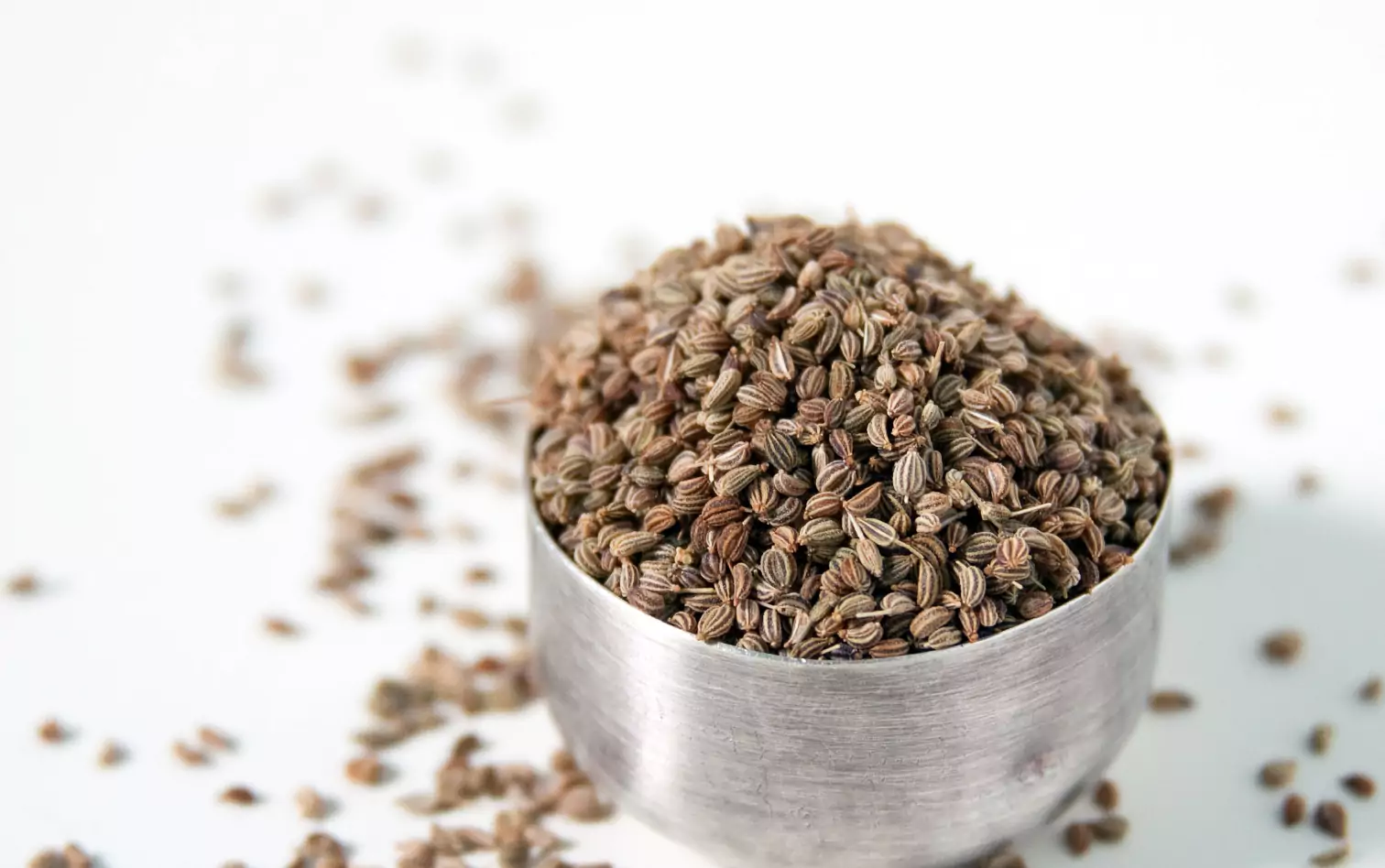
Ajwain, also known as carom or bishop’s weed, is an annual flowering plant in Apiaceae native to the Indian subcontinent. The tiny seed of Ajwain has several health benefits that have been known for centuries in Ayurvedic medicine.
Ajwain seeds are used as a carminative, meaning they help relieve gas and bloating. They can also be an expectorant, meaning they help loosen phlegm and mucus from the respiratory tract. Ajwain is also a good source of antioxidants and minerals like potassium and magnesium.
Some risks associated with Ajwain:
Pregnant women should not take Ajwain due to the risks of congenital disabilities and miscarriages.
Cardamom
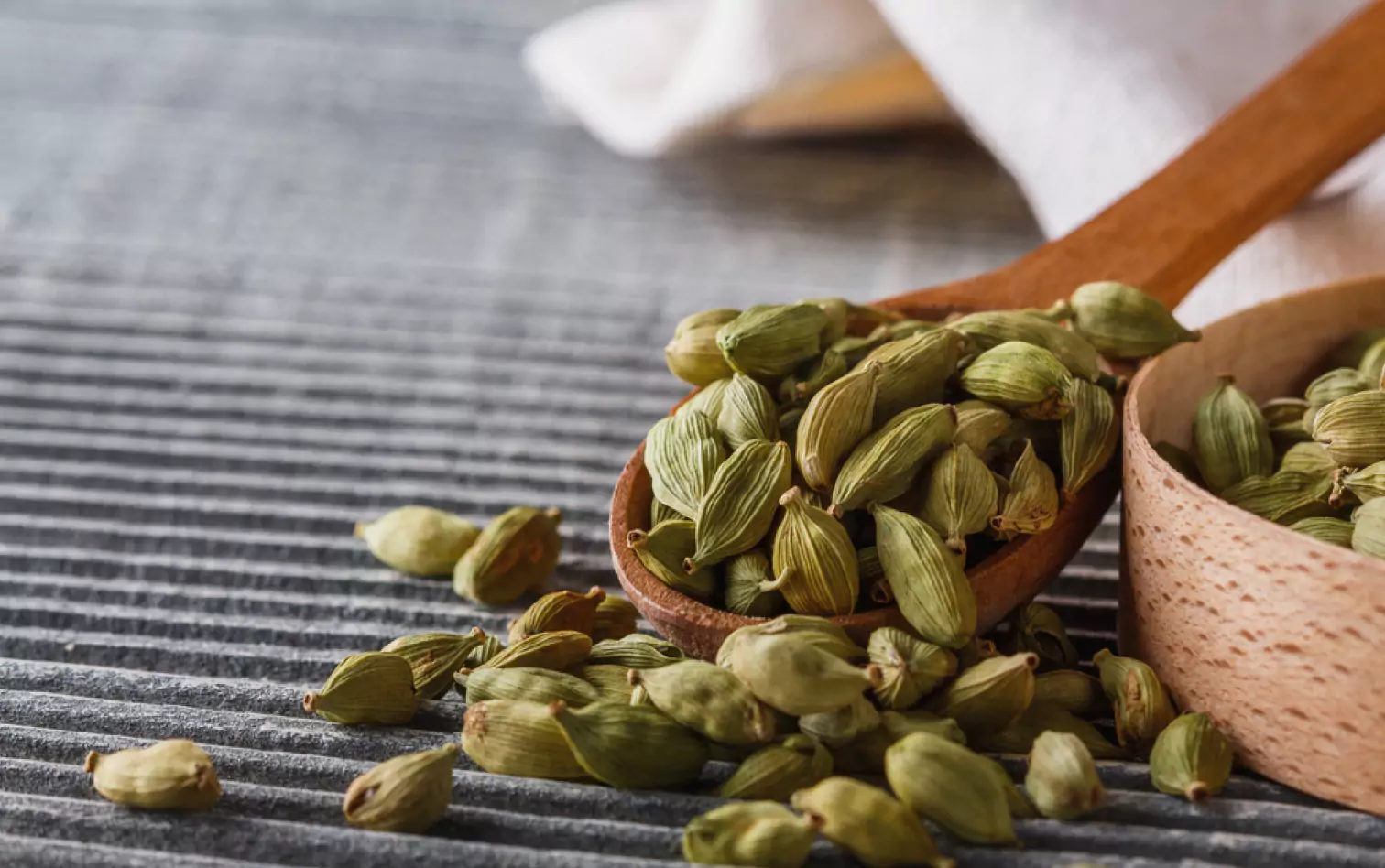
Cardamom is a flavorful and aromatic spice that has many health benefits. It has been a natural remedy for centuries due to its anti-inflammatory and antibacterial properties. This spice comes from the seeds of a plant in the ginger family. It has a unique taste that flavors Indian, Middle Eastern, and Scandinavian cuisine.
It can help improve digestion and blood pressure, reduce inflammation, improve glucose intolerance, and even help fight cancer. Cardamom is also high in antioxidants, which can protect your body from damage caused by free radicals.
Some risks associated with Cardamom:
There are no severe risks currently associated with Cardamom. Still, pregnant or breastfeeding women should consult their doctors before consuming it.
Cumin
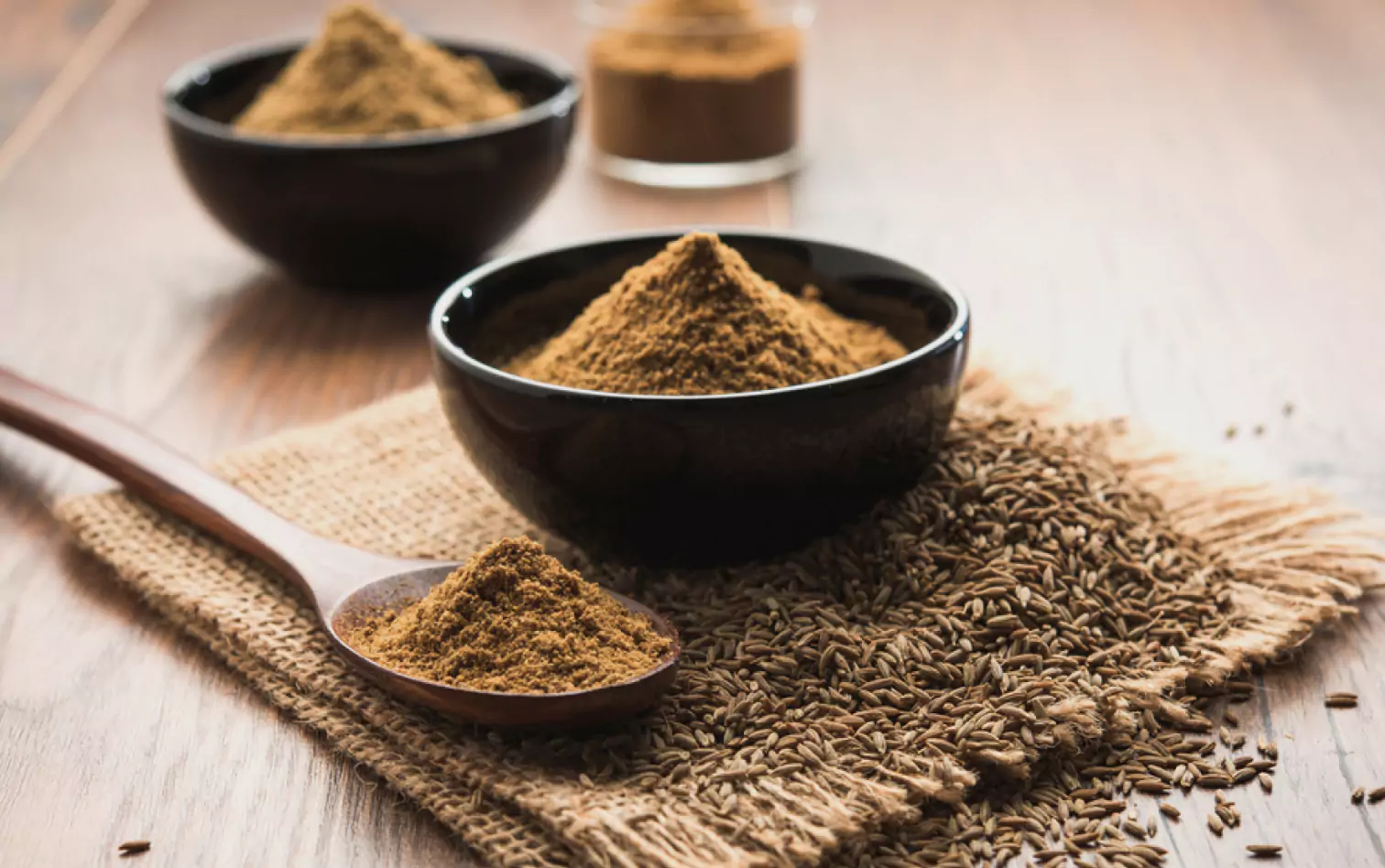
Cumin is a flavorful, aromatic spice that has many health benefits. It’s used in Indian and Middle Eastern cuisine and is a delicious addition to soups, stews, curries, and rice dishes.
Cumin has anti-inflammatory and antioxidant properties that may help improve digestion and support heart health. It's also high in antioxidants, which can protect your body from damage caused by free radicals.
Some risks associated with Cumin:
Cumin is considered a non-toxic herb but should be consumed in moderation by men because it can reduce testosterone levels if taken in large quantities.
Turmeric
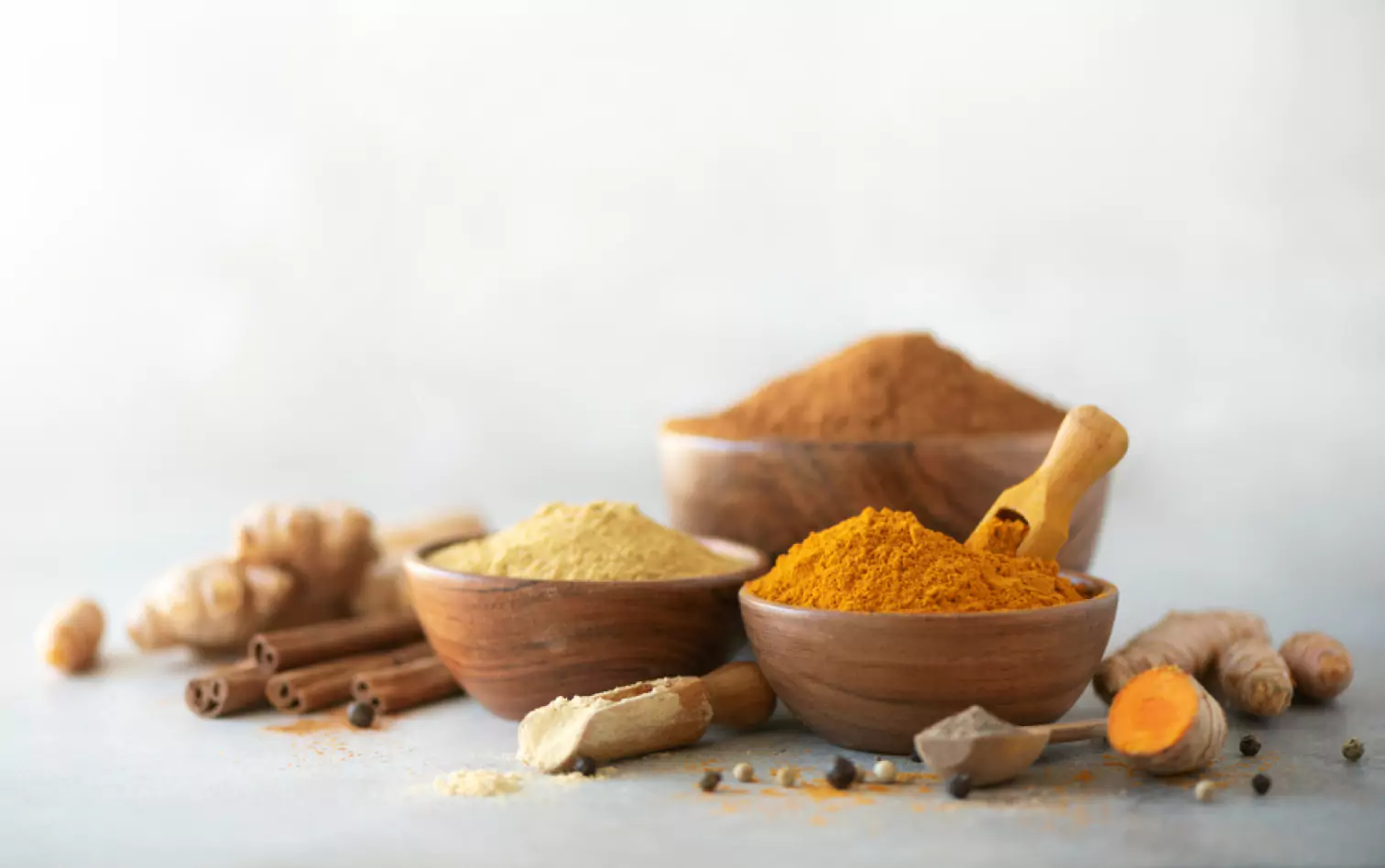
Turmeric is a spice that has been around for centuries and is present in both Eastern and Western medicine. Curcumin, the active ingredient in Turmeric, has been shown to have anti-inflammatory and antioxidant properties. It’s absorbed poorly on its own, but research shows that the rate of absorption improves significantly with the addition of black pepper.
Some preliminary research suggests that curcumin may help improve joint function, reduce pain in people with arthritis, and help protect against certain types of cancer.
Some risks associated with Turmeric:
Turmeric is considered a safe spice for everyone to consume. Still, sometimes it is cut with fillers and food dyes that can be harmful.
Basil

Basil is a famously fragrant herb, but did you know it is also considered a medicinal herb in Ayurveda? Basil is a cooling and cleansing herb, which makes it ideal for use during the summer months.
In addition to its culinary uses, Basil also provides a range of health benefits. Some of the key health benefits of Basil include improving respiratory health, reducing inflammation, and promoting cardiovascular health.
Basil is also known to support digestion, improve fasting blood sugar, and aid detoxification. If you're looking for an easy way to enjoy the many health benefits of Basil, adding it to your meals is a great option.
Some risks associated with Basil:
Basil is a safe herb to cook with but may react to specific health conditions and inhibit fertility.
Neem
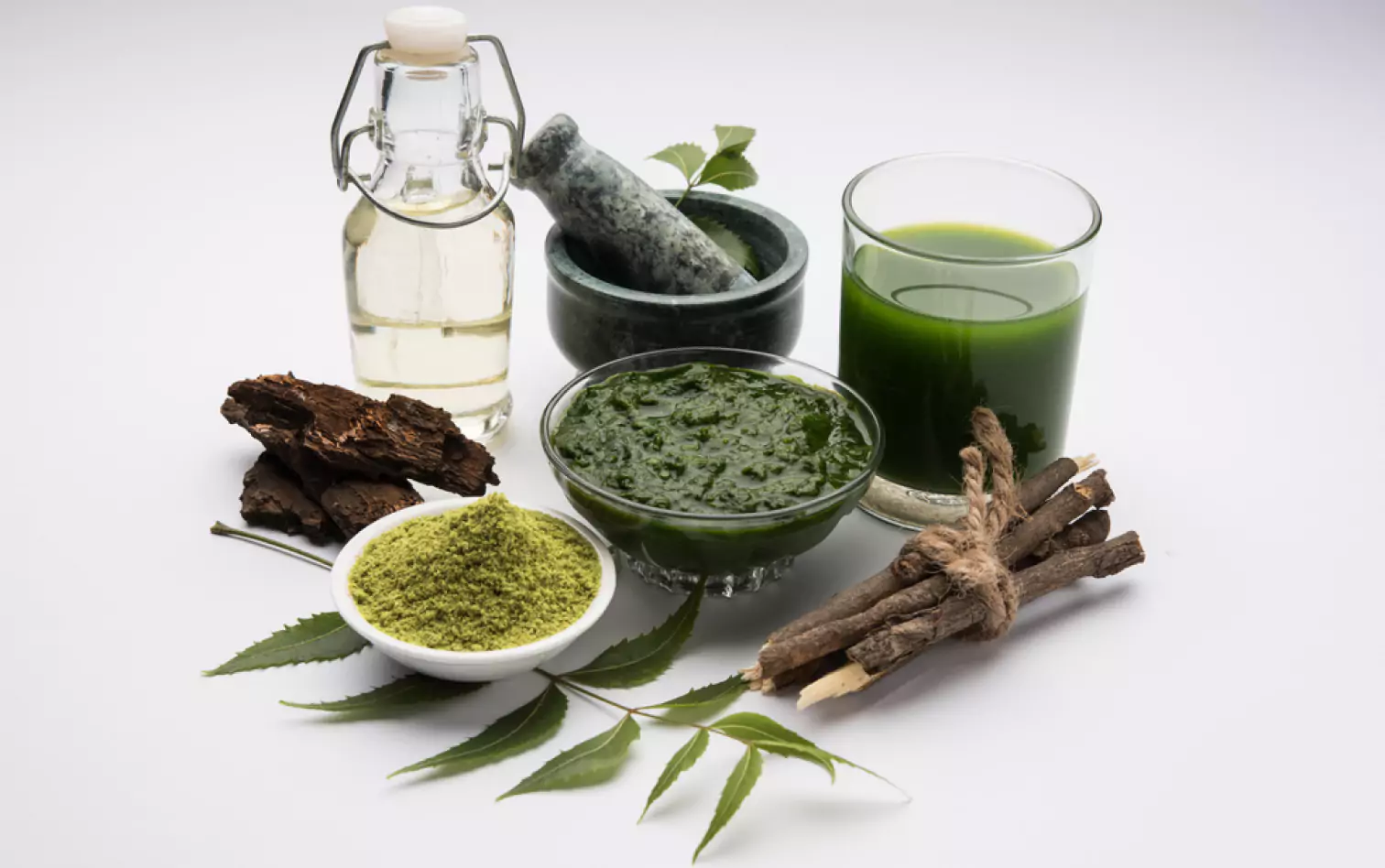
In Ayurveda, Neem is one of the most revered herbs. This multipurpose tree bark may treat various ailments, both internally and externally. It has a long list of health benefits and is considered a “panacea” herb, meaning it can treat many different conditions.
According to Ayurveda, Neem is a detoxifying and purifying agent that can help to cleanse the body of toxins and improve overall health. It is also anti-inflammatory, antiseptic, and antibacterial, making it an effective treatment for many respiratory and skin problems. Additionally, some research suggests Neem may also help manage blood sugar levels and prevent or treat diabetes.
Some risks associated with Neem:
Neem should be approached with caution because it can be harmful if you ingest it incorrectly. Neem can also cause low blood sugar in people with diabetes. Consult with your healthcare provider before using this spice.
Cinnamon
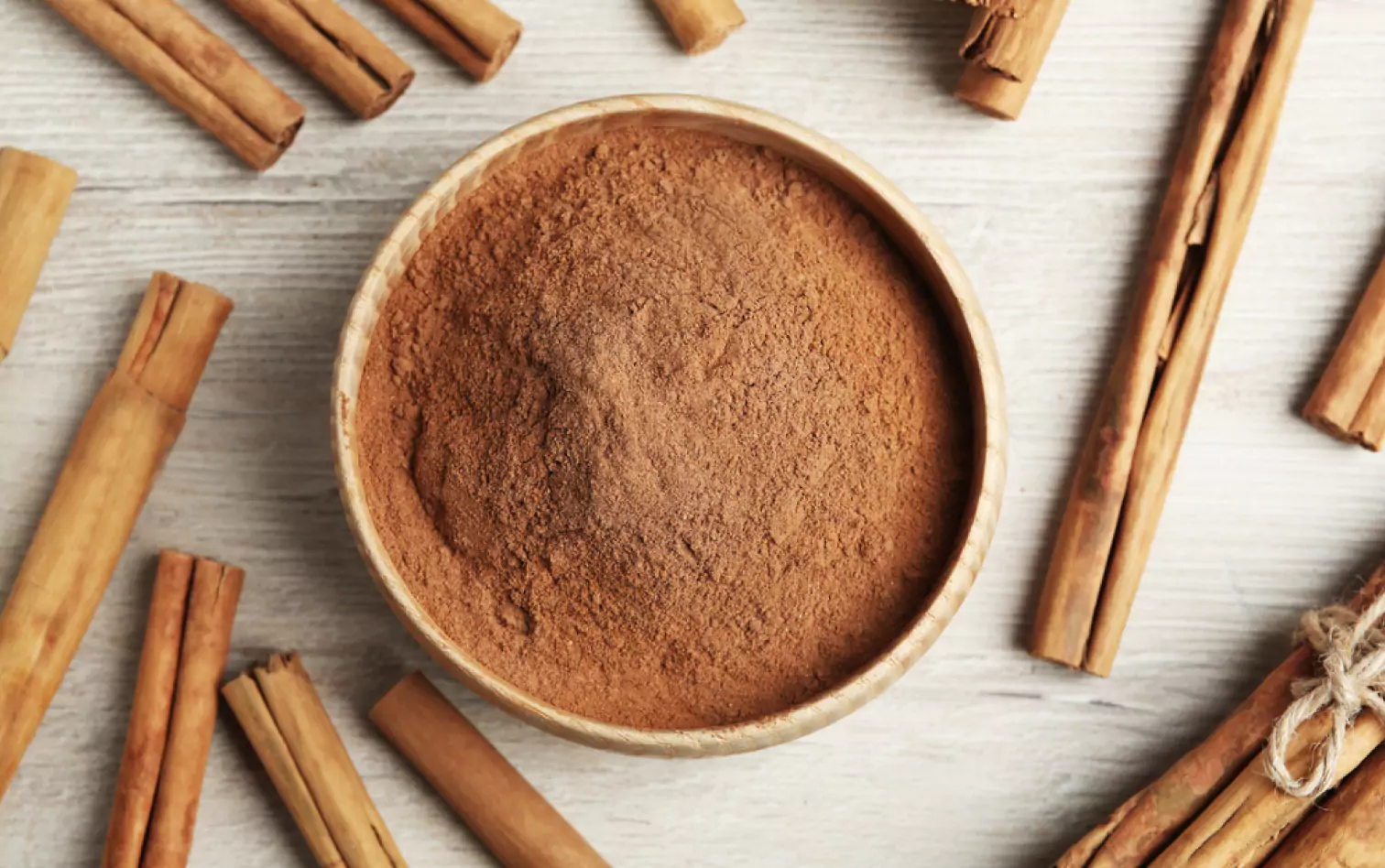
In the traditional Indian healing system of Ayurveda, Cinnamon is considered a “Universal Medicine” due to its wide-ranging health benefits. It’s a very popular spice enjoyed by many for its flavor and versatility.
Cinnamon is a warming spice that can help to improve digestion, circulation, and respiratory function. According to Ayurvedic medicine, it can also help reduce inflammation and pain and be used to control diabetes.
Some risks associated with Cinnamon:
If over-consumed, Cinnamon can damage your liver.
Licorice Root
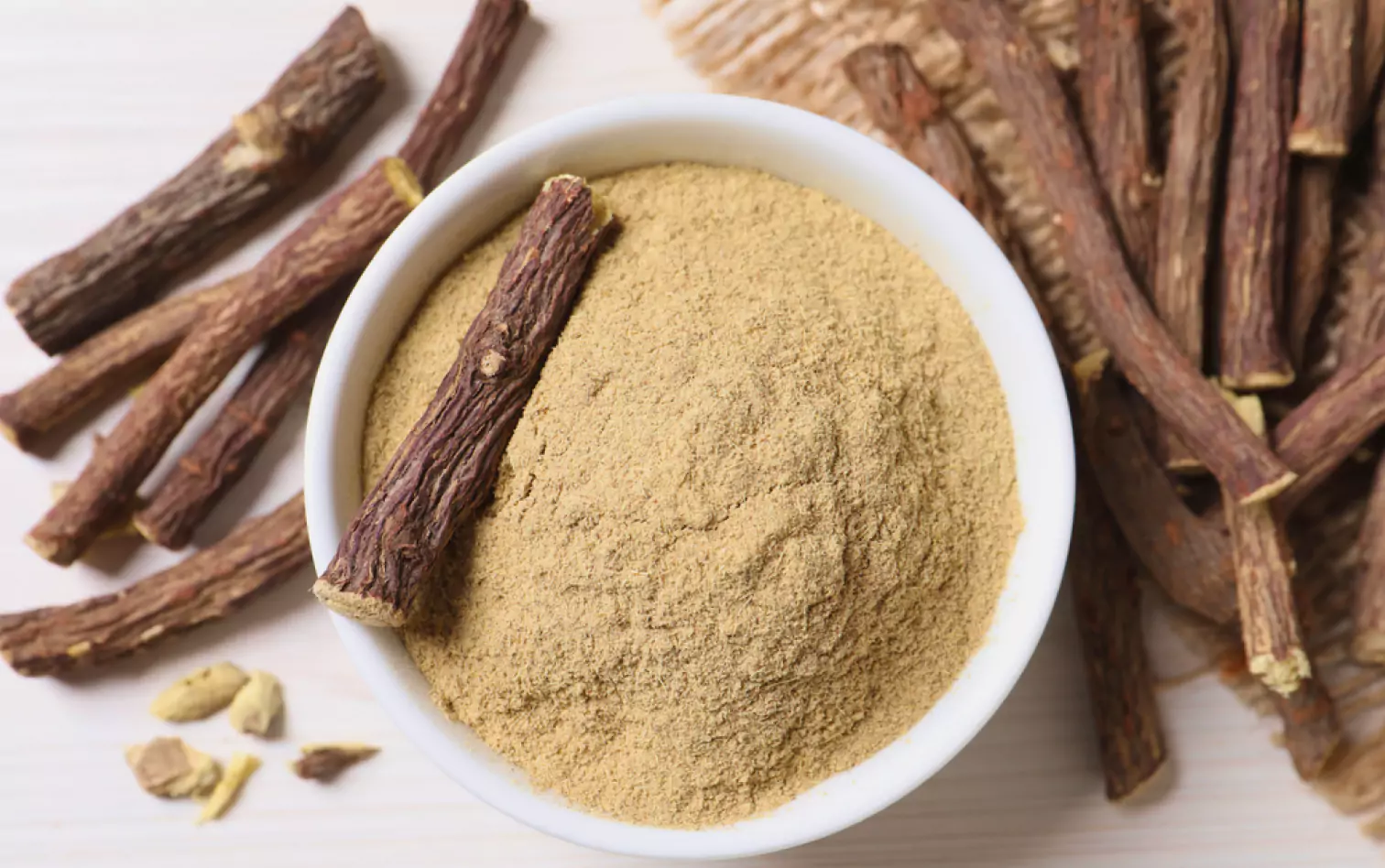
Ayurveda considers licorice root to be a detoxifying and rejuvenating herb. Let’s take a closer look at some of the key benefits of licorice root. Licorice root is thought to be beneficial for weight loss and may help with indigestion and issues like GERD.
Additionally, Licorice Root is thought to boost energy levels and increase vitality. Recent studies have shown that it may also help dermatitis. And, it's considered an adaptogen, allowing the body to adapt to physical and mental stressors.
Some risks associated with Licorice Root:
Licorice root may cause increased blood pressure and decreased potassium levels.
Find the right Nutrisense programto turn insight into progress.
Go Beyond Glucose Data with Nutrisense
Your glucose can significantly impact how your body feels and functions. That’s why stable levels are an important factor in supporting overall wellbeing. But viewing glucose isn't enough. Nutrisense, you’ll be able to learn how to use your body's data to make informed lifestyle choices that support healthy living.
One-to-one coaching
Sign up to access insurance-covered video calls to work with a glucose expert: a personal registered dietitian or certified nutritionist who will help tailor your lifestyle and diet to your goals.
Monitor and measure what matters
With the Nutrisense CGM Program, you can monitor your glucose with health tech like glucose biosensors and continuous glucose monitor (CGM)s, and analyze the trends over time with the Nutrisense App. This will help you make the most informed choices about the foods you consume and their impact on your health.
Find your best fit
Ready to take the first step? Start with our quiz to find the right Nutrisense program to help you take control.

Amanda is a Nutrition Manager and Registered Dietitian, with a Masters in Dietetics from Stephen F. Austin State University. Originally from south GA, she got her undergrad degree from Texas Tech University. She worked at a hospital in Fort Worth, TX, for 4 years as a dietitian, counseling those living with HIV.




